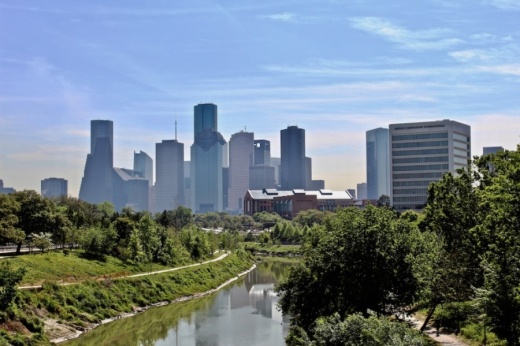The interim report, released by the Army Corps of Engineers, is part of a larger, ongoing study into the feasibility of different flood control projects in the Buffalo Bayou area. In a statement, Col. Timothy Vail, the commander of the Army Corps of Engineers Galveston District, emphasized the report does not make any official recommendations.
"This interim step is intended to gather public feedback before a draft environmental impact statement is released," Vail said. "The report describes evaluations to date; it does not identify a preferred alternative nor does it make any recommendations or decisions."
The study was launched in the aftermath of Hurricane Harvey, which caused extensive damage in the Greater Houston area and produced record levels of water in the two reservoirs in 2017. Of the eight concepts explored in the report—referred to as "alternatives"—three were dropped during initial evaluations while four others remain in focus. The eighth concept is the "no action" concept, which is used as a baseline to compare with the other plans.
The top four alternatives included:
- The construction of a new reservoir and dam upstream of the Addicks Reservoir in the Cypress Creek watershed with the capacity of roughly 190,000 acre-feet of water is a project that would cost between $2.1 billion-$2.9 billion and prevent about $37 million in annual damages. The reservoir would be located on the Harris/Waller county line, west of John Paul's Landing in an area known as the Katy Prairie.
- Completing roughly 22 miles of channel improvements—mainly deepening and widening—along Buffalo Bayou starting from downstream of Studemont Street to Hwy. 6, near the Barker Reservoir outfall structure, would cost between $946 million-$1.2 billion and prevent about $56 million in annual damages. This plan also includes bayou preservation efforts and the use of natural features.
- The potential acquisition of thousands of structures upstream and downstream of the Addicks and Barker reservoirs was included in the report as two options that involve between 9,700-11,700 properties in Barker Reservoir and between 5,000-13,100 properties in Addicks Reservoir totaling between $6.8 billion-$13 billion. The acquisitions would increase the stormwater storage area of the reservoirs, but more analysis needs to be done to determine a target elevation, according to the report.
- A fourth concept would combine the Cypress Creek reservoir concept and the Buffalo Bayou channel improvement concept.
"While tunnels may be an effective and viable longterm option, cost effectiveness, constructability and the continued operations and maintenance remain as challenges," according to the report.
However, the flood tunnel concept will continue to be studied by the Harris County Flood Control District, which plans to analyze a number of potential locations in the county where they could be used.
Aside from the underground tunnel, the interim report also screened out a plan to excavate the reservoirs, which was determined to only have highly localized benefits. Another plan was screened out that involved diverting water from the Buffalo Bayou watershed to the Brays Bayou and/or Brazos River. This plan was considered too risky because of the possibility of the Brays or Brazos already being flooded.
The Army Corps is asking for public input on the report, which can be submitted through Nov. 2. Comments can be submitted by email to [email protected] or by mail to USACE, Galveston District, Attn: BBTRS, P.O. Box 1229, Galveston, TX 77553-1229.
Four virtual public meetings will be hosted to share information on the report and answer questions. More information can be found here.
"We urge everyone who lives or works in the study area to take the time to download the report, attend one or more public meetings, and submit your thoughts to the Corps of Engineers via their website," HCFCD Executive Director Russ Poppe said in a statement. "This public input helps assure that community and natural values are considered as the Corps moves from an interim report to a tentatively selected plan."
Army Corps officials said they estimate issuing a draft feasibility report and draft environmental impact statement for public review and comment in early 2021. The interim report included an analysis of environmental consequences, including the effects the Cypress reservoir would have on the Katy Prairie. The reservoir would likely have a direct effect on the prairie land itself, according to the report.
"Longterm operation of the project would change the hydrology of the area and make it very difficult to manage the land for conservation of the specific habitats and species. While it is not anticipated that the habitats would be completely lost, it is very likely that they would have lower habitat quality than under the existing condition or no action alternative," according to the report. "The proposed alignment would bisect the highest concentration of all known populations and result in direct and indirect mortality of the species and loss of available habitat."
Find the full interim report here and a summary here.





